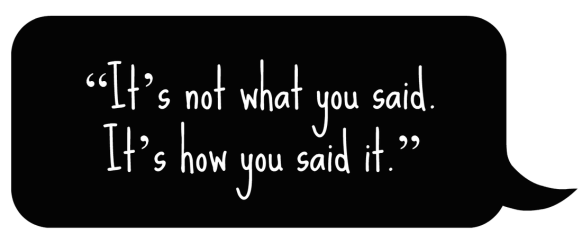
2. “Hinglish”
The following Written Task doesn’t quite get it right. It’s not, in fact, bad. Indeed, the rationale is reasonably promising; it suggests the student has adequate insight into her Part 1 studies. And, the rationale is well written. The Written Task itself is less effective, albeit most of the ideas are clearly expressed. Interestingly, the student, in her rationale, claims to be writing about codeswitching. However, the student doesn’t really seem to have ownership of ideas, and it may be more accurate to suggest that the student’s focus is language change and code-mixing.
Written Tasks are frequently effective where they are apparently authentic; that is, they seem plausible, having the formal and stylistic features of the text type they replicate. Written Tasks, after all, can be regarded as an opportunity for students to engage in an act of creative imitation; whilst the nature of the task is creative, it seems reasonable that Written Tasks mimic preexisting text types, applying an awareness of appropriate language and style.
This Written Task was not accompanied by any appendix; that is, an exemplar text that the student fashioned her response around. Modeling Written Tasks on precisely defined example texts is often an excellent strategy. As insipid as The Straits Times may sometimes seem, the Written Task doesn’t really capture the linguistic, stylistic, and formal features of an article appearing in its lifestyle pages. Instead, the student seems to write, as students sometimes do, ‘an essay in disguise’. If this Written Task is used for the purpose of teaching students, it may be to warn them of the dangers of just this pitfall.
WRITTEN TASK & RATIONALE
IB Assessment
Criterion A – Rationale – 2 marks
The rationale explains how the task is connected to the coursework.
2 out of 2 Clear and well explained.
Criterion B – Task and Content – 8 marks
The content of a task should lend itself well to the type of text one chooses. The task should demonstrate an understanding of the coursework and topics studied. Finally, there should be evidence that the student has understood the conventions of writing a particular text type.
5 out of 8 The student reveals some understanding of the topic, and there is an adequate appreciation of social and cultural contexts. Clearly, the text shows an awareness of the way in which language evolves, that it is a contested medium, and an important marker of social identity. Also, the task seems well chosen; it seems plausible that the text could appear in the publication identified for the audiences the student suggests. Whilst the rationale indicates that the student has an appreciation of the conventions of the text type, this is not entirely apparent in the Written Task. For example, the student intends to include authoritative accessed voices (i.e. quotations) in her text, but doesn’t really succeed; what appears, most frequently, seem more alike academic references. Also, one would anticipate a headline in this kind of text.
Criterion C – Organization – 5 marks
The task is organized effectively and appropriately with a regard for the text type. There must be a sense of coherence.
4 out of 5 There is a good movement of ideas. Generally, the task is coherent. However, the paragraphing seems more typical of an academic essay, and less germane in the context of a lifestyle article.
Criterion D – Language – 5 marks
The language of the task must be appropriate to the nature of the task. This means that students use an appropriate and effective register and style. Whatever the nature of the task, ideas must be communicated effectively.
4 out of 5 The task has generally excellent accuracy. However, the register is rather academic (see, for example, the frequent use of sentence adverbials). And, the use of passives is overwhelming. In other words, the text doesn’t read like a punchy life and style article. Reading this would certainly spoil a reader’s enjoyment of their Sunday morning coffee and croissant. From the perspective of an English Language and Literature teacher, it’s far from bad.


